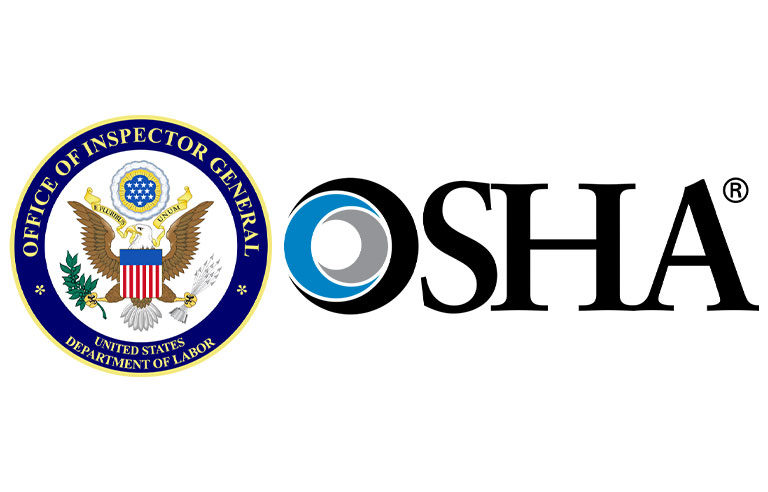OIG to OSHA: Plan for better collaboration with other agencies during health and safety crises

Washington — Understaffed amid the COVID-19 pandemic, OSHA “lost a valuable opportunity” to better protect workers by “not identifying federal partners in a position to assist during a large-scale safety and health crisis and not having or creating collaborative agreements with those partners,” concludes a Department of Labor Office of Inspector General audit report released March 31.
DOL OIG sought to discover “to what extent did OSHA collaborate with external federal agencies’ enforcement or oversight personnel to help safeguard U.S. workers during the pandemic?” It interviewed officials at OSHA and other agencies; analyzed OSHA’s referral data; and reviewed data on high-risk industries, memoranda related to interagency collaboration, and public laws and regulations.
The office found that OSHA neither worked with other agencies’ enforcement and oversight personnel nor tracked or analyzed inspection-related referrals from other agencies to determine if those agencies were regularly referring potential hazards related to COVID-19. OSHA also didn’t calculate its related outreach and training needs, and didn’t have “up-to-date agreements with federal counterparts conducting enforcement or oversight activities during the pandemic that would have enabled OSHA to capitalize on collaborative efforts.”
DOL OIG notes that, in 2020, OSHA received 15% more complaints than in the previous year but conducted only half as many inspections. This largely was the result of the agency’s efforts to limit face-to-face contact between its inspectors and other people. The report also points out that the number of OSHA inspectors had dropped to 748 in 2020 from 1,059 in 2011, while the number of covered establishments had risen to around 8 million from 7.4 million.
DOL OIG recommends that OSHA develop an outreach plan for “large-scale safety and health crises” that identifies agencies with enforcement and oversight personnel on worksites, as well as determines how OSHA will collaborate with those agencies. That plan also should include a tracking system for referrals and outcomes of those referrals.
The second recommendation: explore “mechanisms to enhance collaboration,” such as memorandums of understanding or other written agreements.
| Sign up for Safety+Health's free monthly email newsletters and get the news that's important to you. |
In a March 29 response to Assistant Inspector General for Audit Carolyn R. Hantz, OSHA administrator Doug Parker contends that his agency has collaborated with other agencies in numerous ways and provides 11 examples of work groups and meetings.
“OIG’s audit did not capture the effectiveness of OSHA’s collaboration with these groups to reduce the spread of COVID-19 to workers throughout the United States,” Parker writes.
He goes on to highlight conference calls among OSHA, the U.S. Department of Agriculture’s Food Safety Inspection Service, the Centers for Disease Control and Prevention, and the Food and Drug Administration to discuss COVID-19 issues at meatpacking establishments and other food processors.
“OIG did not evaluate the efficacy of this effort and instead focused solely on OSHA’s alleged lack of direct interaction with individual FSIS inspectors,” Parker writes.
He contends that OSHA interviewed FSIS inspectors during their COVID-19 investigations in meatpacking establishments “when appropriate,” and adds that OIG “did not show how referrals or complaints from individual FSIS inspectors would have improved this process.”
Post a comment to this article
Safety+Health welcomes comments that promote respectful dialogue. Please stay on topic. Comments that contain personal attacks, profanity or abusive language – or those aggressively promoting products or services – will be removed. We reserve the right to determine which comments violate our comment policy. (Anonymous comments are welcome; merely skip the “name” field in the comment box. An email address is required but will not be included with your comment.)

